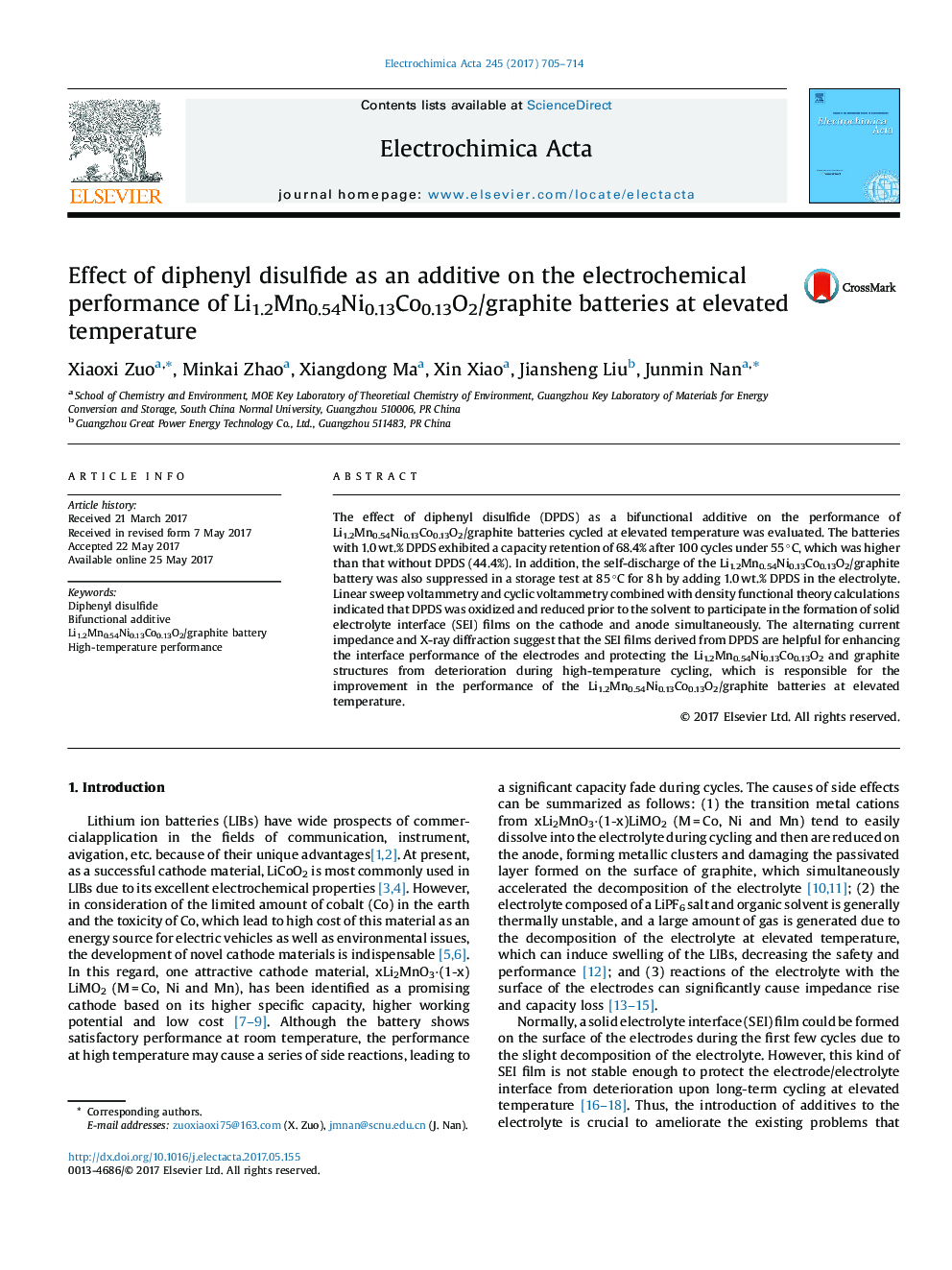| Article ID | Journal | Published Year | Pages | File Type |
|---|---|---|---|---|
| 6470850 | Electrochimica Acta | 2017 | 10 Pages |
â¢Li1.2Mn0.54Ni0.13Co0.13O2/graphite battery with DPDS as additive is evaluated.â¢DPDS was oxidized and reduced prior to the solvent to form SEI films.â¢DPDS help improve the high-temperature performance of lithium ion batteries.
The effect of diphenyl disulfide (DPDS) as a bifunctional additive on the performance of Li1.2Mn0.54Ni0.13Co0.13O2/graphite batteries cycled at elevated temperature was evaluated. The batteries with 1.0 wt.% DPDS exhibited a capacity retention of 68.4% after 100 cycles under 55 °C, which was higher than that without DPDS (44.4%). In addition, the self-discharge of the Li1.2Mn0.54Ni0.13Co0.13O2/graphite battery was also suppressed in a storage test at 85 °C for 8 h by adding 1.0 wt.% DPDS in the electrolyte. Linear sweep voltammetry and cyclic voltammetry combined with density functional theory calculations indicated that DPDS was oxidized and reduced prior to the solvent to participate in the formation of solid electrolyte interface (SEI) films on the cathode and anode simultaneously. The alternating current impedance and X-ray diffraction suggest that the SEI films derived from DPDS are helpful for enhancing the interface performance of the electrodes and protecting the Li1.2Mn0.54Ni0.13Co0.13O2 and graphite structures from deterioration during high-temperature cycling, which is responsible for the improvement in the performance of the Li1.2Mn0.54Ni0.13Co0.13O2/graphite batteries at elevated temperature.
